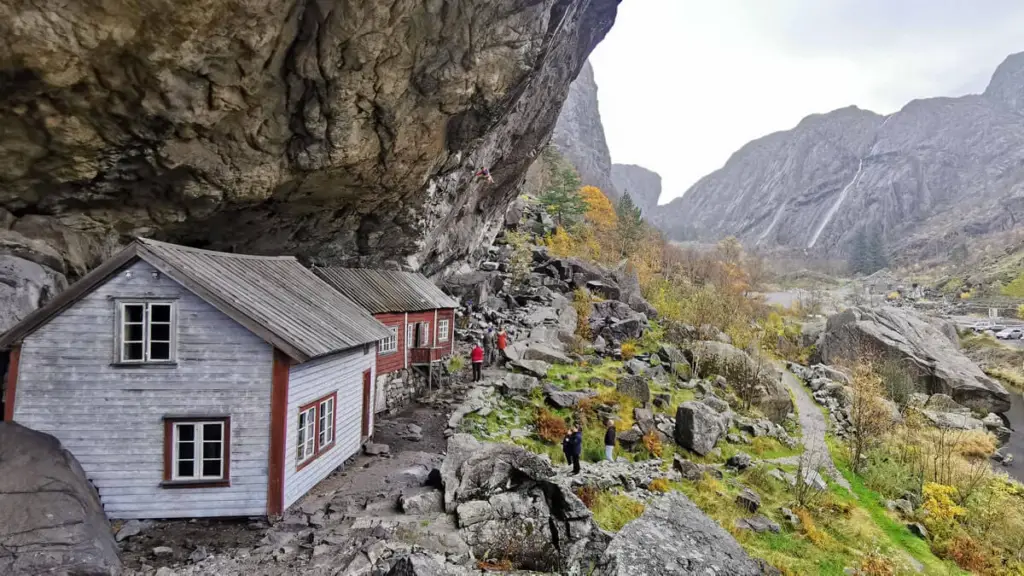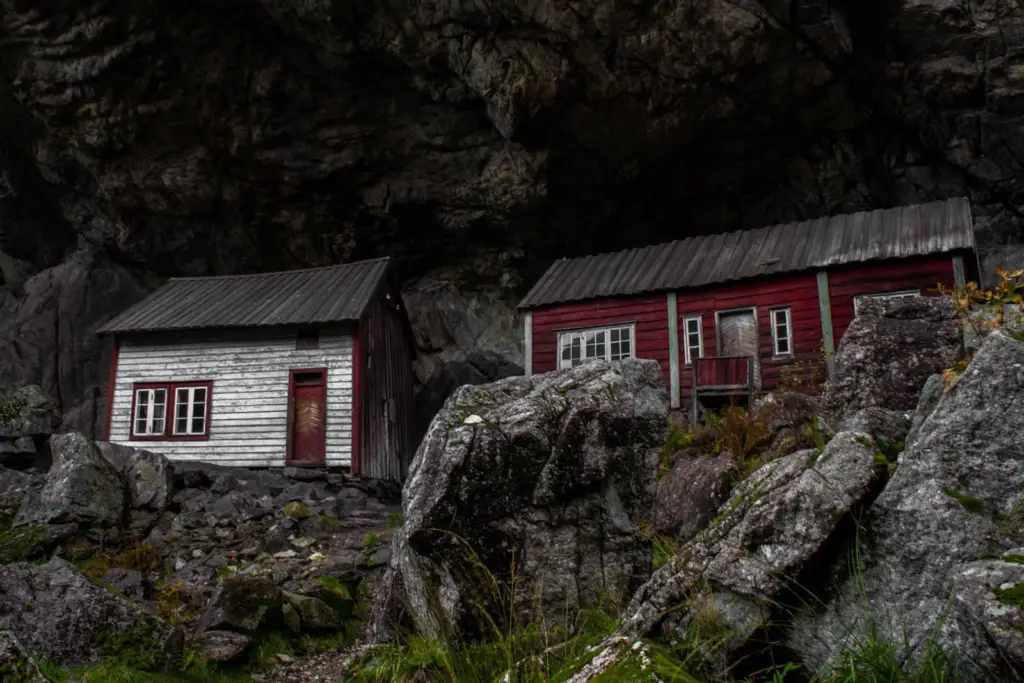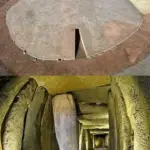Nestled in the picturesque Jøssingfjord region of Norway, a unique farm stands as a testament to the harmonious blend of human ingenuity and natural resources. Built beneath a massive cliff, this architectural marvel showcases how early settlers ingeniously adapted to their environment to create a sustainable and durable way of life.
Dating back to the 19th century, the farm remains a stunning example of nature-integrated architecture, offering both functionality and protection.

A Roofless Wonder: The Cliff as Shelter
What makes this farm particularly fascinating is its lack of a traditional roof. Instead of constructing one, the settlers used the overhanging cliff as a natural canopy, which:
- Shelters from harsh weather: The cliff provides exceptional protection against rain, snow, and wind.
- Reduces construction needs: By relying on the cliff, builders minimized the need for additional roofing materials, saving both time and resources.
- Enhances durability: The cliff’s sturdy structure ensures longevity, making the farm remarkably resistant to the elements.
This innovative design exemplifies how natural features can be incorporated into buildings to improve their functionality.
A 19th-Century Vision of Sustainability
The cliffside farm is a brilliant example of sustainable architecture long before the term became mainstream. By leveraging the existing geological environment, the settlers minimized their environmental impact while maximizing efficiency.
- Resource conservation: Using the cliff as a roof reduced the need for timber or other roofing materials, preserving local resources.
- Energy efficiency: The cliff provides natural insulation, helping regulate indoor temperatures in both summer and winter.
- Longevity: The durable rock ensures that the structure withstands the test of time, requiring minimal maintenance.
This farm highlights how resourcefulness and environmental awareness were essential for survival in remote and challenging locations like Jøssingfjord.

Cultural and Historical Significance
The Jøssingfjord farm is more than just an architectural innovation; it is a cultural relic. Dating back to the 19th century, it offers insight into how rural Norwegian communities lived and adapted to their environment.
Historical Context
- The farm was likely a response to the region’s harsh climate, which demanded creative solutions for housing.
- The settlers’ ability to use natural formations as integral parts of their homes reflects their deep understanding of and respect for their surroundings.
Preserving Heritage
Today, the farm is celebrated as a piece of Norwegian cultural heritage, drawing visitors and historians eager to learn about traditional ways of life.
Lessons in Nature-Inspired Design
The cliffside farm of Jøssingfjord serves as an inspiring example for modern architects and designers:
Like Us on Facebook!
- Nature as an ally: The farm’s design underscores the importance of working with, rather than against, natural elements.
- Sustainability by necessity: The integration of the cliff into the structure demonstrates how sustainable solutions can arise from necessity and creativity.
- Timeless durability: The farm’s ability to endure for over a century showcases the benefits of designing with long-term resilience in mind.
A Visit to Jøssingfjord
For those who appreciate stunning landscapes and innovative architecture, the Jøssingfjord farm is a must-see destination. Surrounded by dramatic cliffs, lush greenery, and the serene fjord, the farm offers a glimpse into Norway’s architectural history and a chance to marvel at the ingenuity of its builders.
Subscribe Us on YouTube!
Conclusion
The cliffside farm in Jøssingfjord, Norway, is more than just a shelter—it is a symbol of human adaptability and the enduring wisdom of working with nature. By using the natural cliff as a roof, 19th-century settlers created a structure that remains a marvel of sustainability and functionality.
As the world increasingly turns to eco-friendly solutions, the lessons from this ingenious farm remind us that nature can be our greatest ally in building for the future.






















